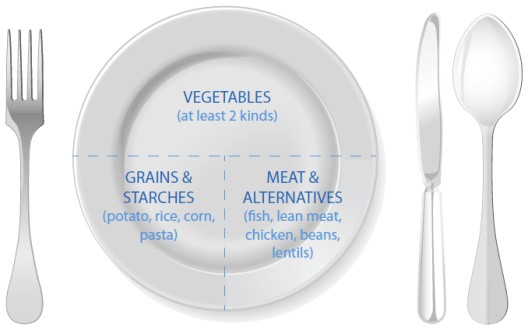
Healthy eating is a cornerstone of diabetes management, but people newly diagnosed with the condition might not know how to create a meal plan. There are a few principles and guidelines you can follow to ensure that you prepare nutritious meals. Read on to learn more about diabetes meal planning for beginners.
Understanding diabetes and its impact on food
To recognize the impact of food on people with diabetes, it’s important to understand the condition itself. There are 2 main types of diabetes:
Type 1 diabetes occurs when the body’s immune system destroys the beta cells in the pancreas; as a result, the pancreas can no longer produce insulin.
Type 2 diabetes occurs when the body makes insulin, but can’t use it properly (this is called insulin resistance) or insulin production in the pancreas decreases (this is called insulin deficiency).
When the body doesn’t produce enough insulin, glucose builds up in your bloodstream rather than getting into the cells to provide energy.
Many foods that you eat can have an effect on your blood sugar levels. Carbohydrates especially are an important part of your nutrition plan, because they are one of the body’s main sources of energy. However, they have the greatest effect on your blood sugar. Eating too few carbohydrates can lead to low blood sugar (hypoglycemia), while eating too many can lead to high blood sugar (hyperglycemia).
Key principles of diabetes-friendly meal planning
The key to a diabetes-friendly nutrition plan is to ensure that you eat a variety of healthy foods. This means a mixture of carbohydrate, protein and fat.
The Diabetes Canada clinical practice guidelines recommend that people with diabetes should have a daily diet that is composed of:
- 45% to 60% carbohydrate,
- 15% to 20% protein, and
- 20% to 35% fat

Portion control is also a very important consideration for people with diabetes. Eating too much food can cause weight gain and other diabetes complications such as heart disease and kidney disease. As well, a diet that is very high in carbohydrate can cause blood sugar to spike, which can also lead to diabetes complications.
Eating 3 balanced meals each day that contain portions of carbohydrate, protein and fat is an important way to help you manage your blood sugar and prevent or avoid diabetes complications.
Building a diabetes-friendly plate
An easy way to ensure that you include all the important food groups in your meals is the “plate method.” If you divide your dinner plate into quarters, here is how you should arrange your foods at any given meal:
- ¼ of your plate should be composed of lean protein, e.g. chicken or turkey or meat alternatives such as tofu or lentils
- ¼ of your plate should be composed of healthy carbohydrate, e.g. baked potato or brown rice
- ½ of your plate should be composed of non-starchy vegetables, e.g. broccoli or asparagus

Grocery shopping and meal preparation tips
For people who lead busy lives, grocery shopping can be one of the most stressful chores. That’s why it’s a good idea to create a list for each trip. It will help you focus and make healthy decisions rather than impulsive ones! Check out this diabetes-friendly grocery list, with tips to ensure that you make the right food choices.

When shopping for packaged foods particularly, be sure to check the nutrition facts label. It gives you information about the amount of basic or essential nutrients and calories in a certain amount of any particular packaged food. You can use this information along with the % Daily Value to compare and choose food products.
Sample meal plan
Now that you’ve purchased healthy groceries, it’s time to develop a healthy meal plan. Planning a weekly menu can help you shop smarter at the grocery store and take the stress out of planning meals after a long day at work.
Check out our menu plan for people with diabetes. It includes suggestions for an entire week!]
Overcoming common challenges
Sometimes challenges arise for people with diabetes with respect to planning healthy meals. Here are 2 challenges that you might face.
- Dining out: This can be a challenging but manageable experience for people with diabetes. It requires a bit of planning and mindful choices. Click here for strategies and tips to help make dining out with diabetes both healthy and enjoyable.

- Managing cravings: Changing eating habits can be one of the most challenging parts of diabetes management, especially for people who have just been diagnosed with the condition. Click here to learn how to manage cravings and stick with your healthy diabetes diet.
Developing a healthy diabetes meal plan takes some preparation and consideration. However, with the right tools and guides you can develop a nutritious and satisfying meal plan that will ensure your continued good health.




